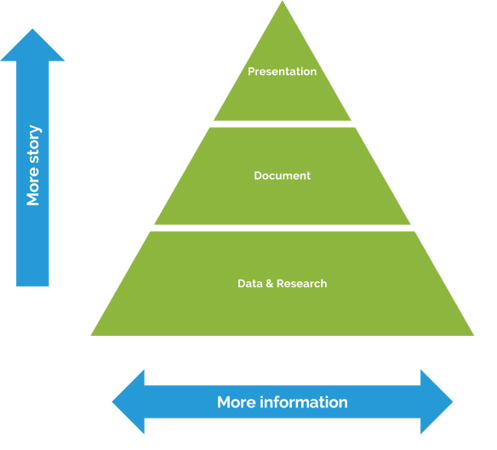One of our core values at Distilled (see our timeline of the spin-out of SearchPilot from Distilled) was that it was not our job to deliver reports, it was our job to effect change:
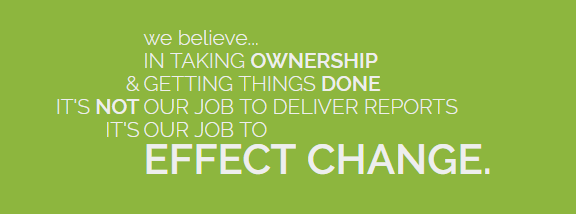
You should see the thread arguing about effect vs. affect
However, in order to effect change, it clearly sometimes is our job to deliver reports, and we want to get as good at them as we possibly can and make sure we are as effective with them as possible.
To that end, I thought I’d collect a few links I’ve seen and thoughts I’ve had over the years on how to do this:
Give away the punchline
You’re not writing literature. You don’t need to build suspense in your audience. In fact, that can cause more harm than good.
I remember a moment early in my career, pre-Distilled, when we delivered a report to the CFO of a public company at 8pm after a couple-of-day-long death march. The report itself contained good news, but the subject line of the email delivering the report referred to a (relatively) tiny bit of bad news.
Reading on her Blackberry (this was in about 2004), she immediately leapt into action on the small bit of bad news.
I don’t think she ever read the actual report we’d slaved over for 48 hours.
So remember:
- The subject line of the email builds up to…
- …the body of the email which builds up to…
- …the executive summary of the report which builds up to…
- …the actual report
[And that’s before we get onto other forms of delivery below].
In particular, remember that the executive summary is not the table of contents or a missive about the purpose of the document.
The executive summary should be written so that if it’s the only thing the recipient reads, they’ve read the most important part.
Write “upwards”. Deliver “downwards”
If you think of your output like this (which I still think of as “PPT, DOC, XLS” even though in reality for me it’s now “Google Slides, Google Docs, Google Sheets”):
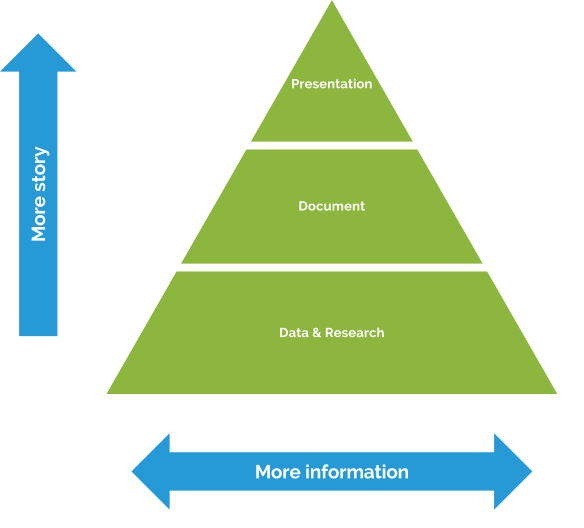
Then I want to make the argument that you should do your work “upwards” — in other words you start with the data gathering, research, and analysis needed to figure out the insights and the important points that need to be delivered, before laying them out in a logical form in a document, and then summarising into a story delivered in a presentation (always be presenting):
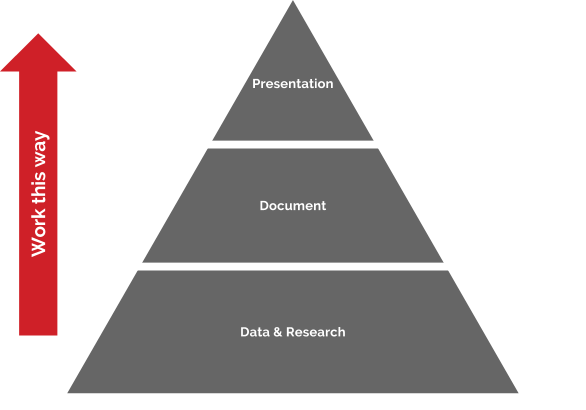
BUT. You don’t send over the raw data, then the document and finally, show up with a presentation to deliver. You deliver “downwards” — telling the story first, following up with the document for reference and action, and providing the underlying data as an appendix for the interested reader:
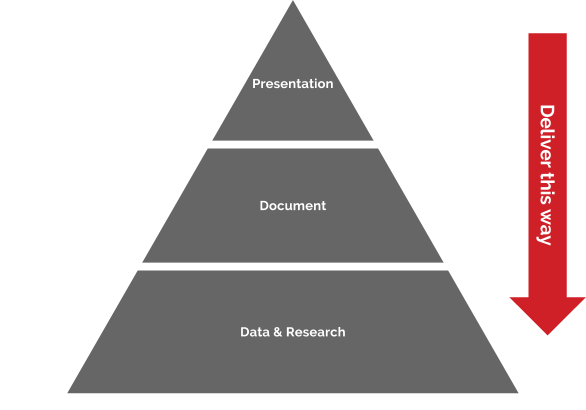
I’ve shown those hierarchies as triangles — but some of the underlying thinking is taken from the so-called pyramid principle which is all about that middle layer — the document:
The key takeaways are:
- Start with the answer first.
- Group and summarize your supporting arguments.
- Logically order your supporting ideas.
Come up with your structure first. Write the bits in between.
The only tweak I’d make to that advice is that I like to come back and draft the final version of the executive summary last when my thoughts have had a chance to percolate as I write the rest.
Make it scannable
Remembering the demands on the time of everyone you work with in every organisation, the more you can do to make it easier to read your documents, the more successful you will be.
This applies not only to the overall structure of the document as outlined above, but also to the formatting within sections. Bullet points, subheads, bold text, diagrams. These are all your friends.
Everything is a story
Although I talked above about how you’re not writing literature (and that’s true) don’t forget that humans are wired for stories. When you come to build the presentation of your work especially, stories help make your points memorable and help win people over.
Don’t be afraid of antagonists (competitors), story arcs (hero’s journey), context (where we’ve come from), and vision (where we’re going over the longer run). Use the SUCCES factors from made to stick to help your stories land:
- Simple
- Unexpected
- Concrete
- Credible
- Emotional
- Stories
Hygiene factors
These don’t really have anything to do with making great business documents — they are more like minimums for any serious document, but nevertheless it’s worth remembering that screwing up hygiene factors has the ability to kill credibility and mean that all your hard work is for nothing. A quick reminder list:
- Proofread for spelling, grammar, and flow — get someone else to read important documents or if you know that you have weaknesses here
- Run spellcheck! Don’t ignore the red squiggly lines
- Check your formatting for consistency — use the tools available in all word processors to remove broken formatting on pasted-in content
- Ensure that you are sending a finished version — CTRL+F for whatever placeholder you use to mark unfinished sections, check you don’t have tracked changes (Word), check who can see / comment (Google Docs), strip meta data as required. Save to a PDF if necessary
Keep learning
Legendarily, Jeff Bezos (the founder and CEO of Amazon) has banned internal presentations and demands everything be communicated in memo form — as prose.

This creates interesting dynamics:
But how do you prepare a presentation for a giant-brained alien? Well, here’s my second realization: He will outsmart you. Knowing everything about your subject is only a first-line defense for you. It’s like armor that he’ll eat through in the first few minutes. He is going to have at least one deep insight about the subject, right there on the spot, and it’s going to make you look like a complete buffoon.
So it’s clearly possible to keep getting better and better at both producing and consuming business reports. If anyone has a copy of a “declassified” Amazon prose-memo I’d love to see one. In the meantime, share any thoughts or tips you have in the comments.
